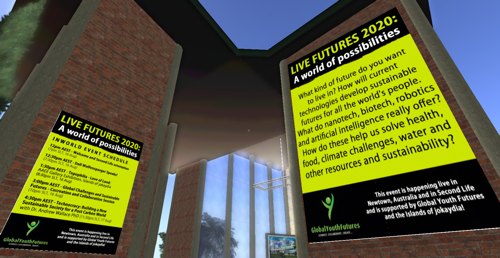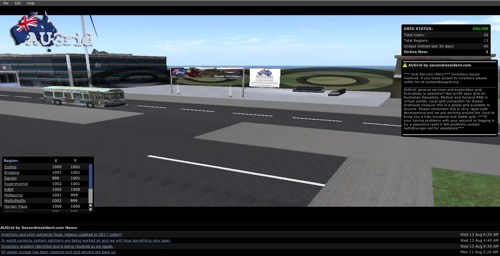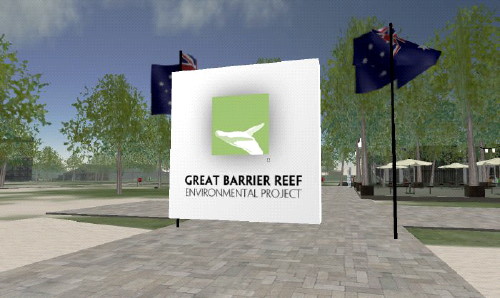I stumbled across a communication from a consortium of New Zealand Universities, who are making a public call for support for their proposal (which is reproduced in full below):
I’ve been asked as a contributor to OpenSim to pass along the following.
There is a bid going on for a new public project in NZ, through the University of Otago, and the principles (researchers at the university) are making a general call for support for their bid.
If you could sign a letter of support for this bid within the end of the week, please forward it to me, and I will pass it on.
“Support†can be any thing of your choosing, and is non-binding. Samples are appended to this email.
I have been authorized to pass along the following excerpt from the application:
Executive Summary
Project Title: National Virtual World Grid
Project overview
Rationale for the project
The National Virtual World Grid (NVWG) project will develop an open access national virtual world grid based and bring together a community of researchers and educators with an interest in playing an innovative role in the development and usage of the next wave of the Internet: Web3.D.
Continual advances in telecommunications bandwidth and computer processing power are already giving users a more multimedia-intensive experience on the Web. Now with the advent of online virtual worlds (e.g. Google Lively, Second Life) we have the harbinger of the next wave of the
Internet: Web3.D, where users inhabit and participate in a 3D Virtual World (VW) by means of their
personal in-world avatars. An IT industry research and advisory company, Gartner, has predicted that by 2011, 80% of all Internet participants will be regular users of Web3.D technology. Already over 500 US universities are offering courses of instruction in Second Life, and major companies are
getting involved too (e.g. Vodafone, IBM, TelstraClear, Sun). The commercial nature of the most widely used Virtual World implementations, such as Second Life, places high financial costs on users who are charged for developing in-world content and for the traffic associated with accessing the remotely located servers.
This proposal describes how through the development of an national virtual world grid based on open
source software deployed on KAREN, and activities to promote the development of an active user
community, NZ tertiary educators and researchers can be given an accelerated opportunity to play an
innovative role in Web3.D development and usage.
Project outline
The National Virtual World Grid (NVWG) project will operate NZ-based computer servers running the OpenSim software (an open-source clone of the core functionality of Second Life) in “grid modeâ€. This will encourage uptake of Web3.D technology across New Zealand by enabling organisations connected to the Kiwi Advanced Research and Education Network (KAREN) to obtain free and high speed access to virtual world “regions†hosted in our servers, or to interconnect their own “region servers†with those of other institutions in NZ.
By developing, managing, and operating this National Virtual World Grid, and Web-based community
support tools for users, there will be an opportunity for all institutions that are connected to
the KAREN network to:
1) undertake both experimental and routine use of virtual worlds in teaching and research;
2) develop engaging, interactive in-world content customised for New Zealand use; and
3) develop new context-specific plugins enabling interaction with external applications that are
connected to the real (non-virtual) world and external services.
Expected outcome
The project will:
* Promote the establishment, growth and maintenance of a community of NZ users of Web3.D technology for tertiary education and research
* Provide the environment for New Zealand to become an innovator in Web3.D technology at the
international level.
* Facilitate the tertiary education sector to produce graduates ready to exploit Web3.D technology for the economic benefit of New Zealand
Project partners
University of Otago (Department of Information Science): Project leadership and management; grid
development and management of central grid services and Web-based community support tools.
University of Canterbury: deployment and management of Canterbury grid node (SIM); exemplar VW learning environments for two learning application areas.
University of Auckland: deployment and management of Auckland grid node (SIM).
It’s great to see such advocacy coming from New Zealand universities. I’m more than happy to be corrected on this but I’m unaware of such a project underway in Australia. There’s an enormous amount of development going on in the Australian university sector but is there anything as potentially unifying as the New Zealand model?
Thanks to Mo Hax (via Mal Burns) for the heads-up.




Recent Comments